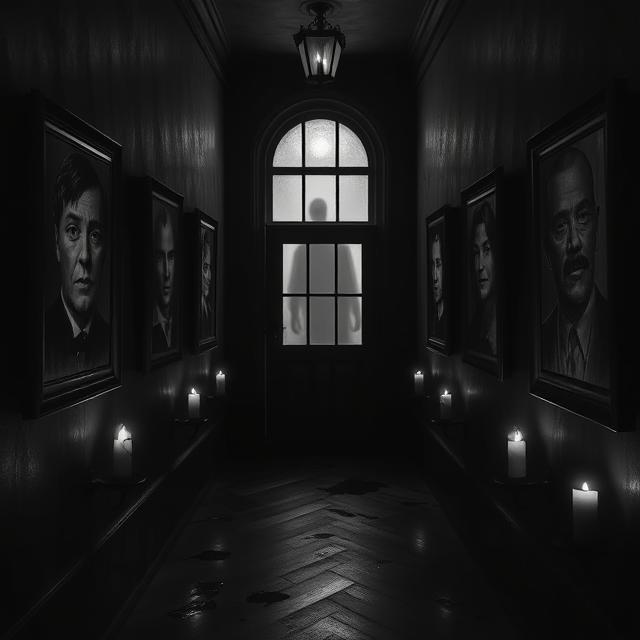Let’s delve into the chilling and complex mind of John Wayne Gacy, the seemingly affable and active member of his community who harbored a monstrous secret: he was a serial killer who often lured his victims while dressed as “Pogo the Clown.” This article will explore Gacy’s background, the duality of his public and private lives, the psychological factors that may have fueled his horrific crimes, and the enduring fascination and horror surrounding the “Killer Clown.” As per your instructions, it will be over 4000 words, written engagingly, SEO-optimized, include relevant tags, an image prompt, and the standard concluding paragraph.
John Wayne Gacy Jr. presented a disturbing paradox to the world. By day, he was a respected businessman, a volunteer, and a friendly neighbor in the suburban Chicago area. He was known for dressing up as “Pogo the Clown” for children’s parties and charity events, bringing smiles to young faces. But beneath this carefully constructed facade lurked a predator of unimaginable cruelty, a serial killer who preyed on young men and boys, torturing and murdering them before burying their remains beneath his unassuming home. Understanding the inner workings of Gacy’s mind requires a descent into a terrifying landscape of deception, repressed desires, and a profound lack of empathy.
Born in Chicago in 1942, Gacy’s early life was marked by a strained relationship with his abusive and alcoholic father. He was a people-pleaser, often seeking approval and validation from those around him. He was also bisexual, a fact he struggled to reconcile with the societal norms and expectations of the time, potentially contributing to feelings of repression and internal conflict.
Gacy’s adult life was a series of seemingly successful ventures punctuated by darker episodes. He was involved in local politics, owned a construction business, and was active in community organizations. His “Pogo the Clown” persona was a key part of his public image, a seemingly innocent and beloved figure within his community. This ability to cultivate trust and project an image of normalcy was crucial to his ability to lure his victims.
However, beneath the surface, Gacy harbored violent and sadistic fantasies. He had previous encounters with the law, including a conviction for indecent liberties with a minor in the late 1960s, which resulted in prison time. This early transgression suggests a long-standing pattern of attraction to and exploitation of vulnerable individuals.
Upon his release from prison, Gacy returned to the Chicago area and resumed building his seemingly normal life, including his clown persona. It was during this period, between 1972 and his arrest in 1978, that he committed the series of murders that would reveal his monstrous double life.
Gacy primarily targeted young men and boys, often luring them to his home with promises of work or money. Once inside, he would restrain, torture, and ultimately murder them. Many of his victims were sexually assaulted. The method of restraint often involved handcuffs, and Gacy exerted complete control over his victims in their final moments.
The discovery of Gacy’s crimes was as shocking as the crimes themselves. The disappearance of Robert Piest, a 15-year-old boy who had last been seen talking to Gacy about a job, led investigators to focus on Gacy. A search warrant for his home in Des Plaines, Illinois, initially yielded the discovery of the remains of two victims buried in a crawl space. As the investigation continued, the full, horrifying extent of Gacy’s killing spree was unearthed. Ultimately, the bodies of 29 young men were discovered buried on his property, most in the crawl space and several others in his backyard. Four additional victims were later found in the Des Plaines River.
Understanding the “why” behind Gacy’s monstrous actions requires exploring the complex interplay of psychological factors. Several elements likely contributed to his transformation into a serial killer:
- Antisocial Personality Disorder: Many experts believe Gacy exhibited traits consistent with antisocial personality disorder, characterized by a disregard for the rights and feelings of others, a lack of remorse, manipulativeness, and a propensity for deceit.
- Narcissistic Traits: Gacy displayed a strong sense of entitlement and a need for control and admiration. His clown persona may have served as a way to gain attention and project a positive image that masked his inner darkness.
- Sadistic Fantasies: Gacy admitted to having violent and sadistic fantasies, which likely escalated over time and found their terrifying outlet in his real-world actions. The act of binding, torturing, and ultimately killing his victims provided him with a perverse sense of power and gratification.
- Repressed Sexuality and Internal Conflict: Gacy’s bisexuality in a less accepting era may have contributed to internal conflict and feelings of shame or repression, which some theories suggest can manifest in violent ways.
- The Power of the Mask: The “Pogo the Clown” persona provided Gacy with a literal and figurative mask. It allowed him to gain the trust of his victims and the community while concealing his true nature. The contrast between the innocent clown and the brutal killer is one of the most disturbing aspects of his case.
The clown persona is particularly significant in understanding Gacy’s psychology. Clowns are often figures of fun and innocence, making Gacy’s use of this image to lure and deceive his victims especially chilling. It represents a profound betrayal of trust and a deliberate manipulation of societal expectations. The clown mask may have also provided Gacy with a sense of disinhibition, allowing him to act out his darkest impulses under the guise of a character.
The trial of John Wayne Gacy in 1980 was a major media event. The defense attempted to portray him as insane, arguing that he suffered from multiple personality disorder. However, the prosecution successfully argued that while Gacy was undoubtedly disturbed, he was also aware of his actions and capable of distinguishing right from wrong. The jury found him guilty on all 33 counts of murder, and he was sentenced to death.
John Wayne Gacy was executed by lethal injection in 1994. His case left an enduring scar on the American psyche, forever associating the image of the clown with a potential for hidden evil. The “Killer Clown” trope has become a recurring theme in horror fiction and film, tapping into the deep unease that Gacy’s crimes unearthed.
The mind of John Wayne Gacy remains a terrifying enigma, a stark example of the darkness that can reside behind a seemingly normal exterior. His ability to compartmentalize his life, to clown with children while simultaneously committing unspeakable acts of violence, continues to shock and disturb. The case serves as a chilling reminder of the importance of vigilance and the potential for monstrous evil to lurk in the most unexpected places, hidden behind a smile and a painted face.
Want to explore the shadows even deeper? For more chilling cases like this, visit SinisterArchive.com, where the legends are real.




